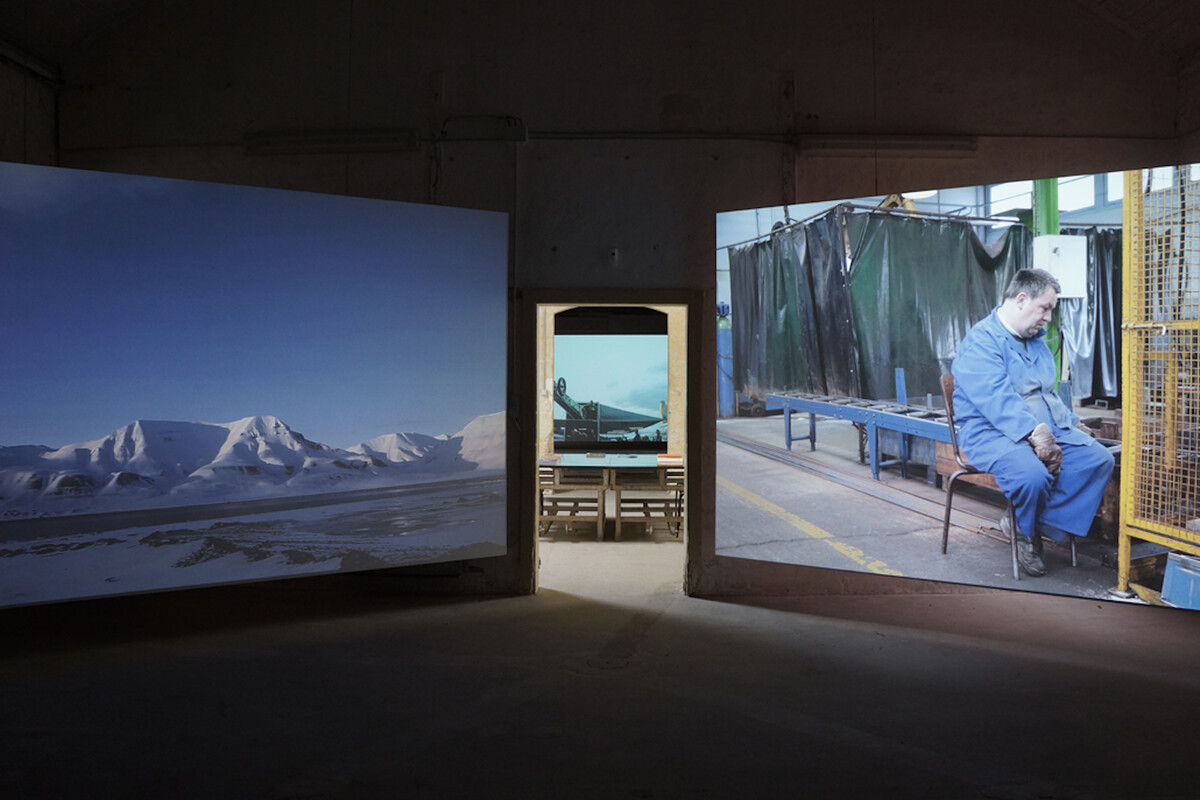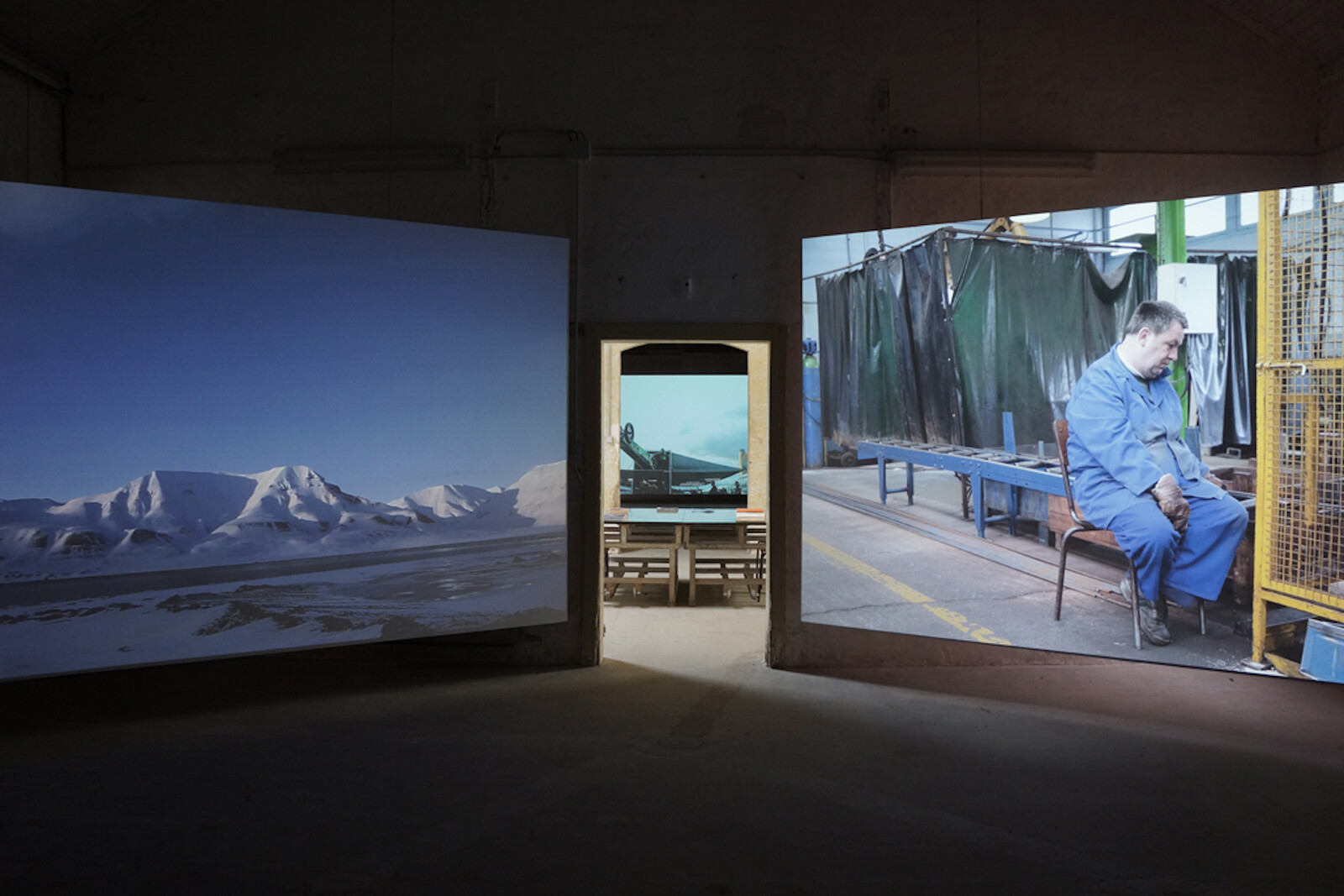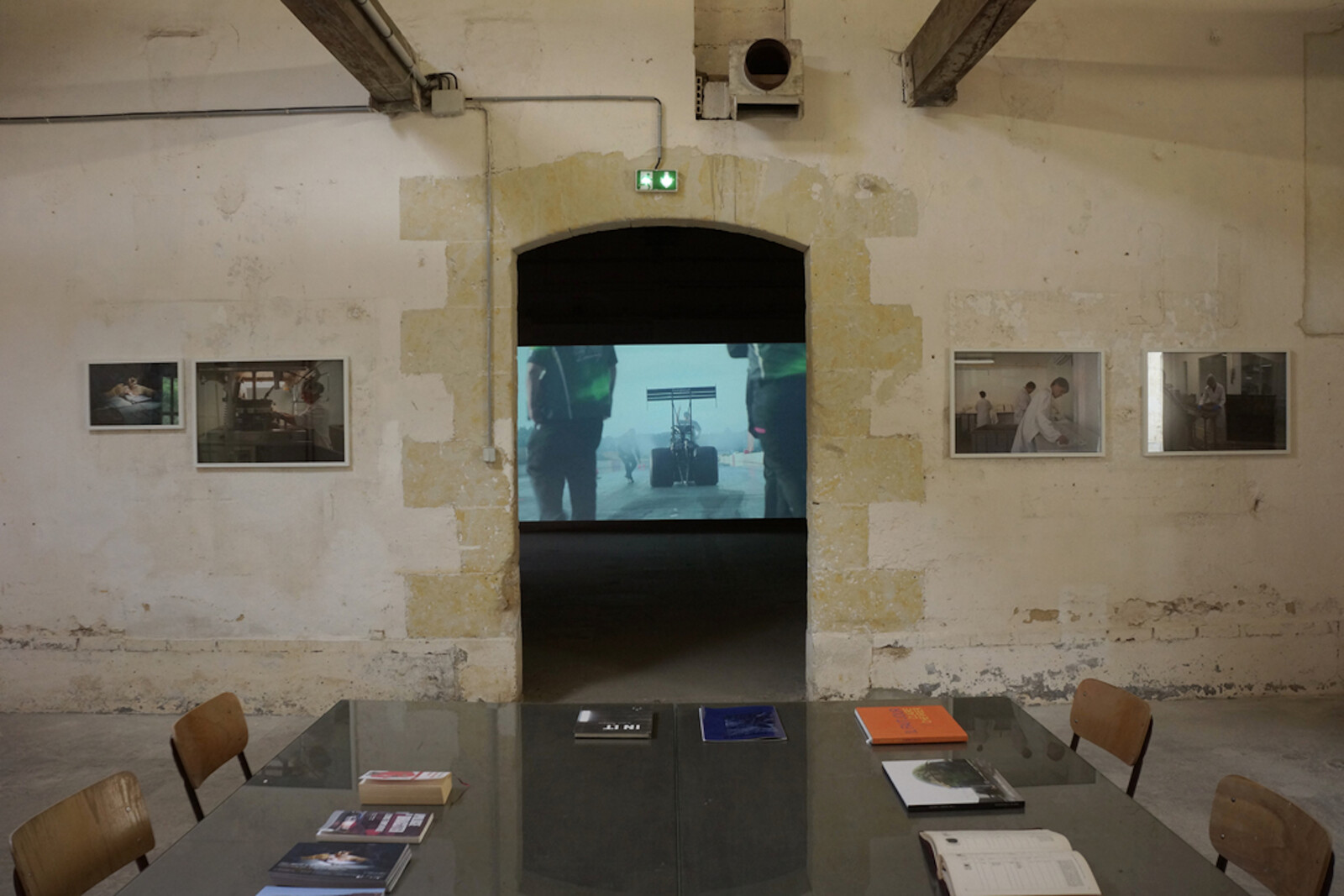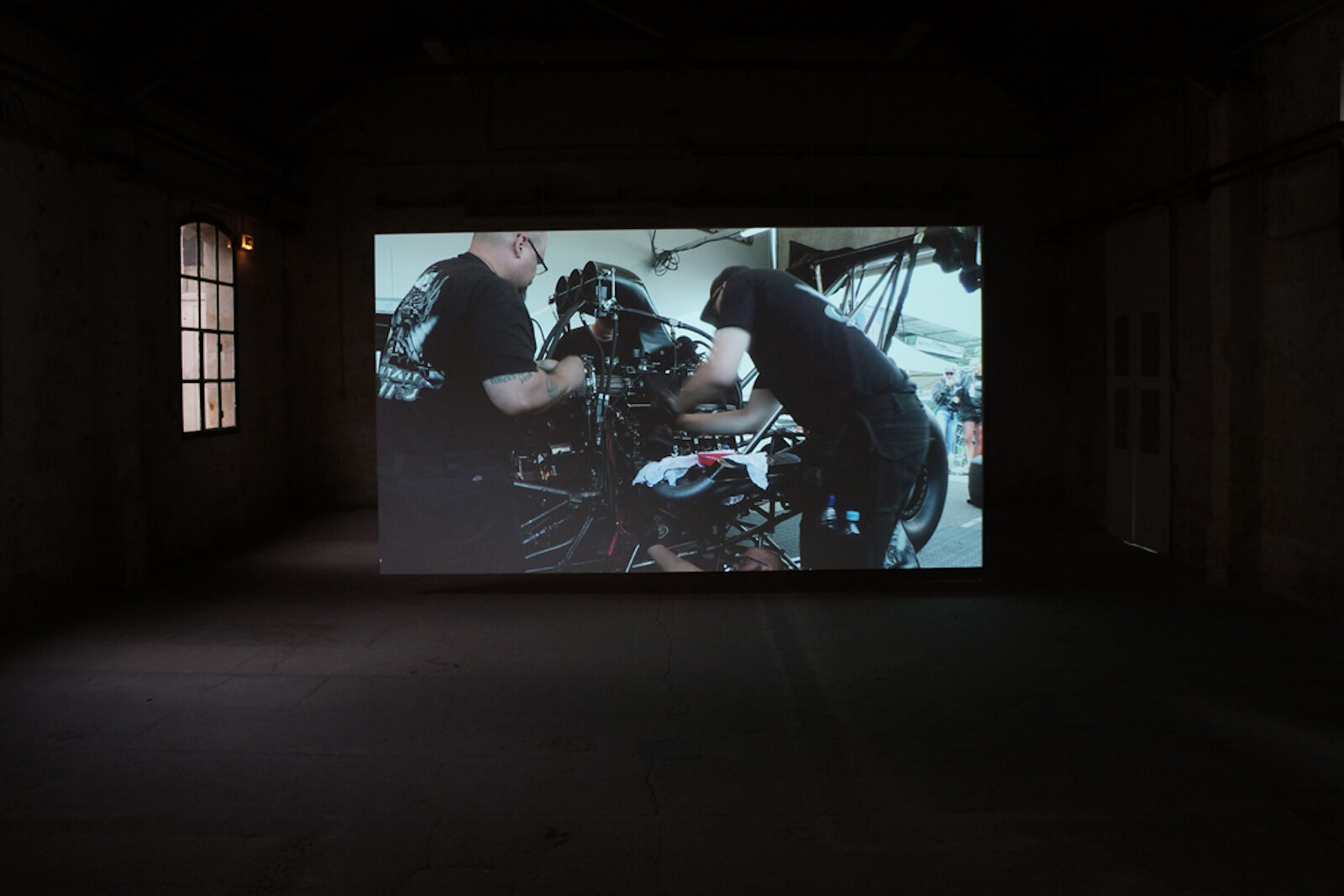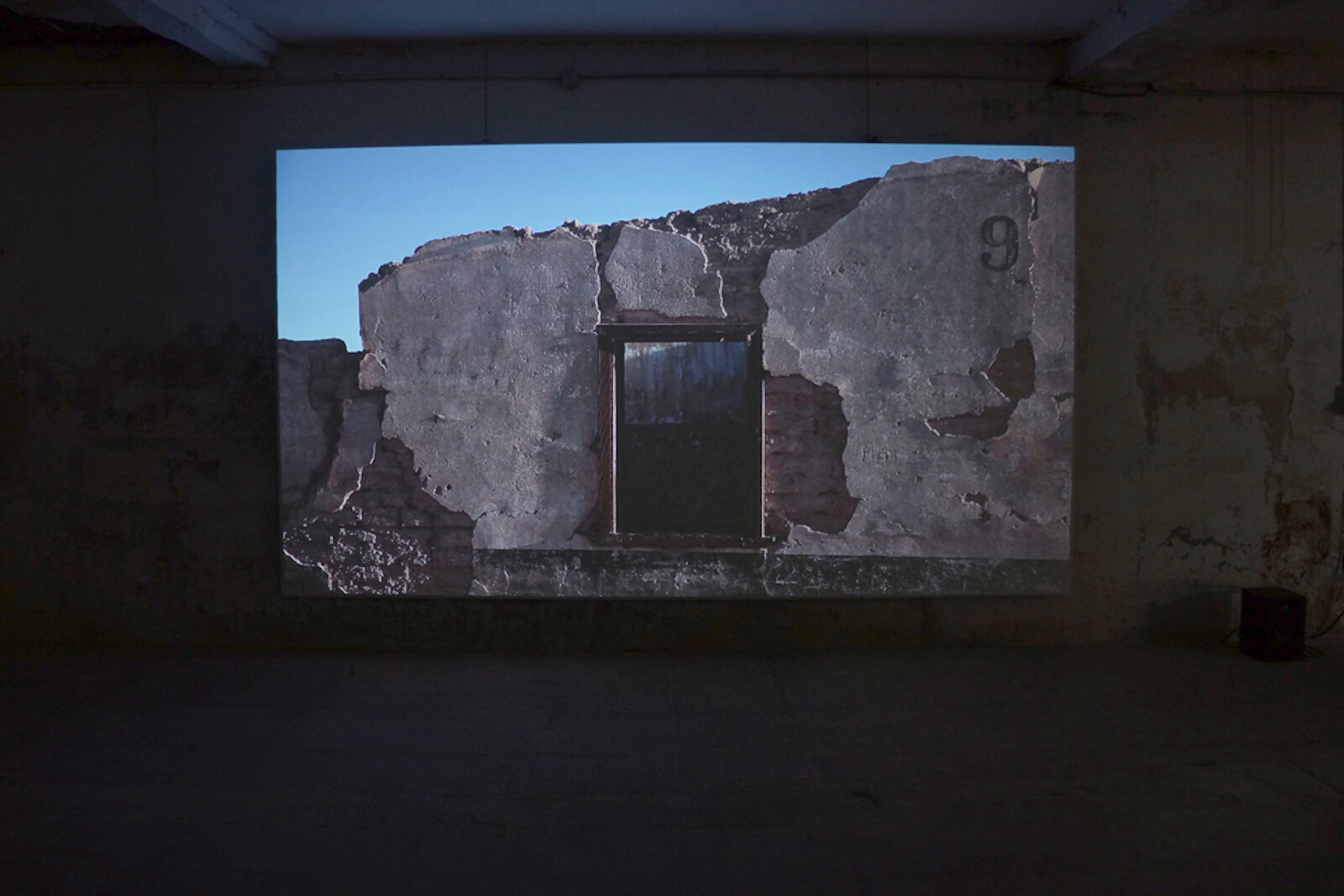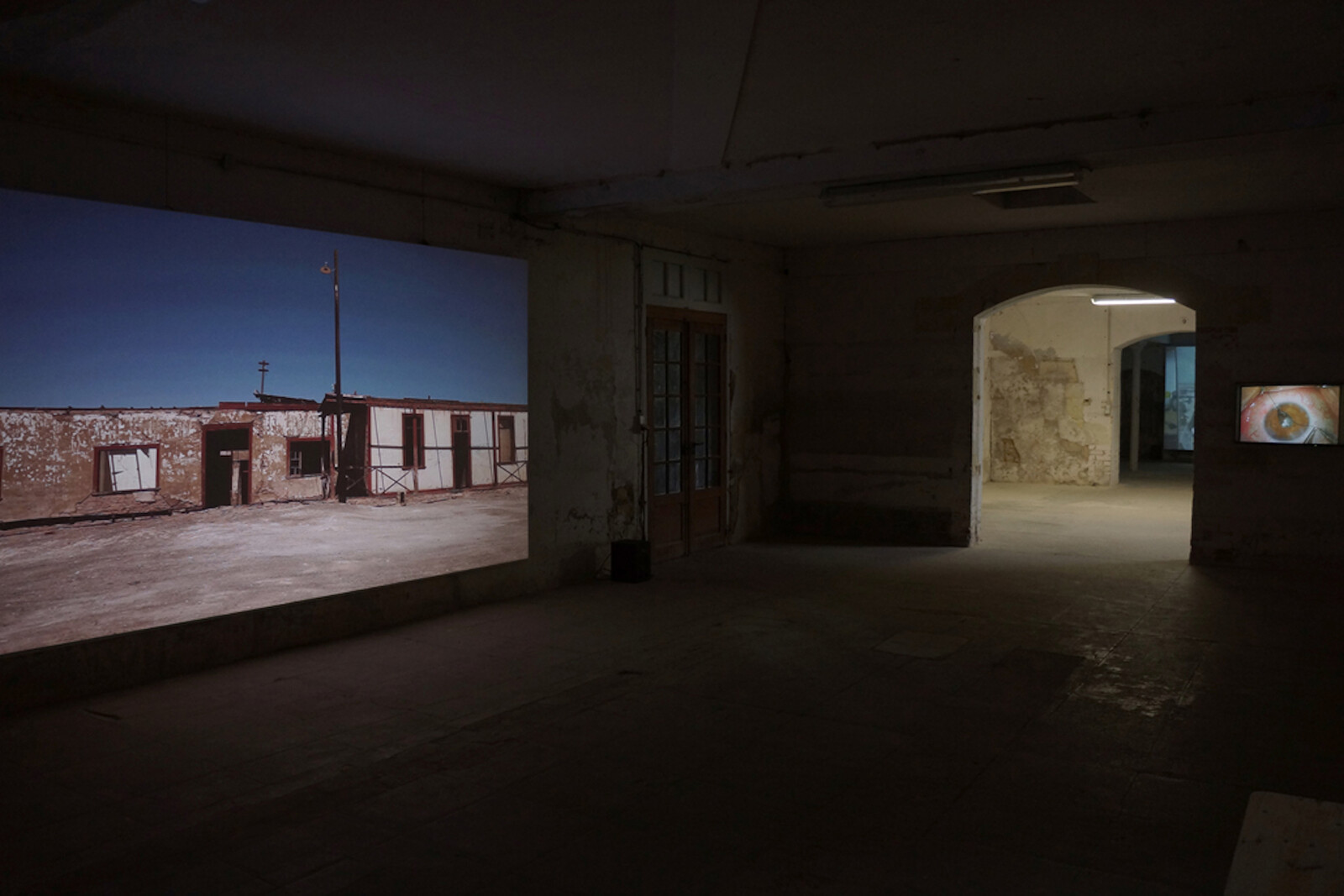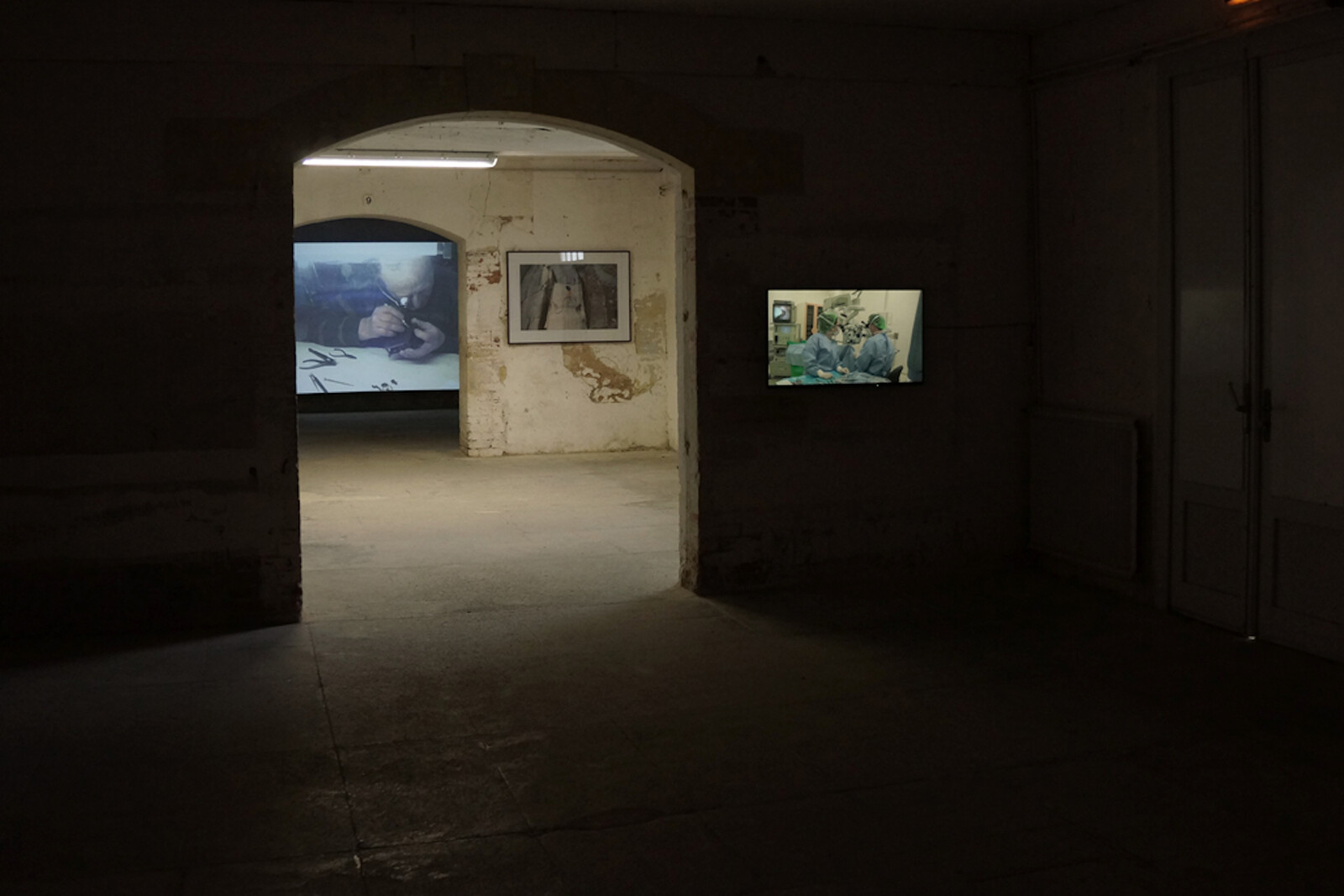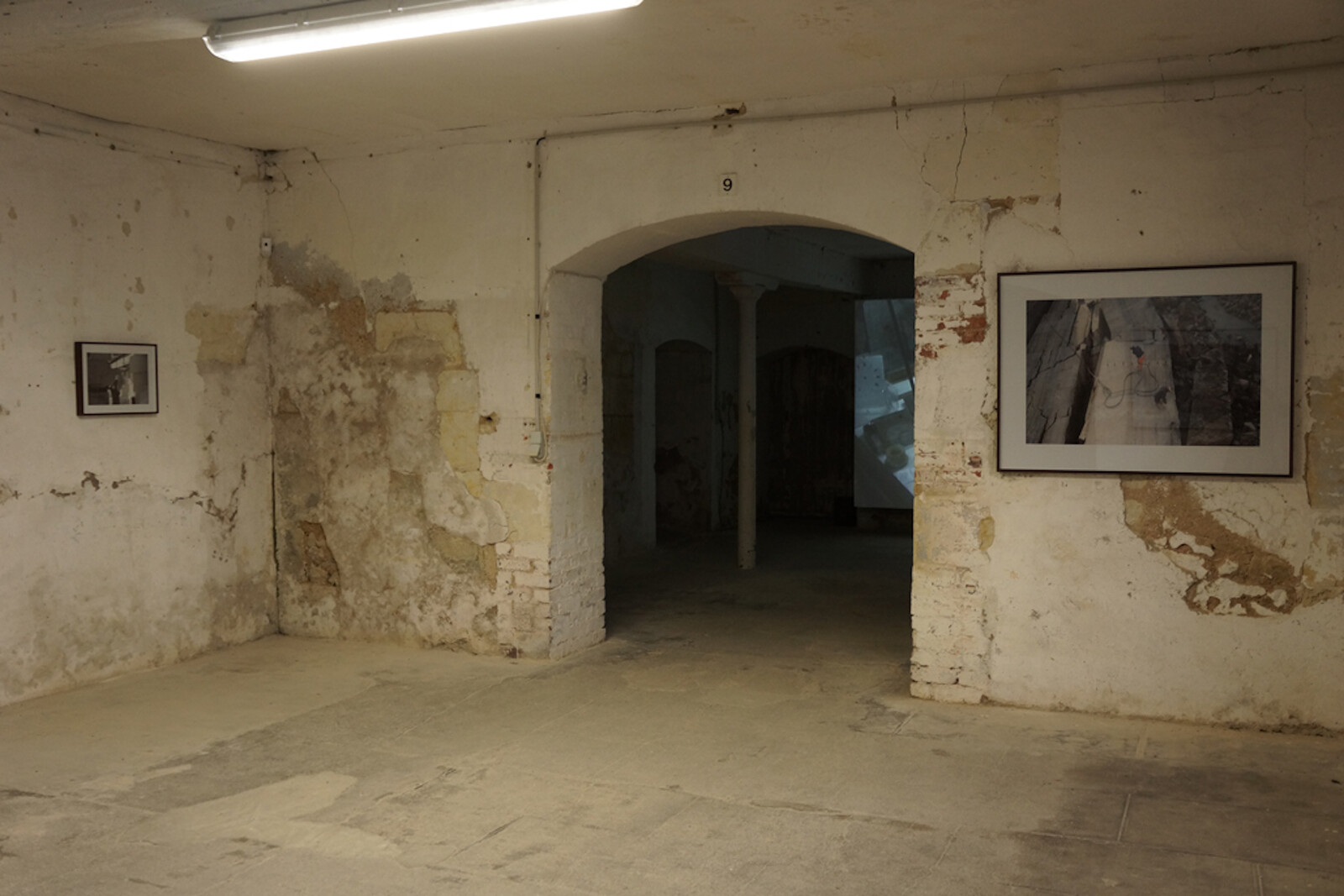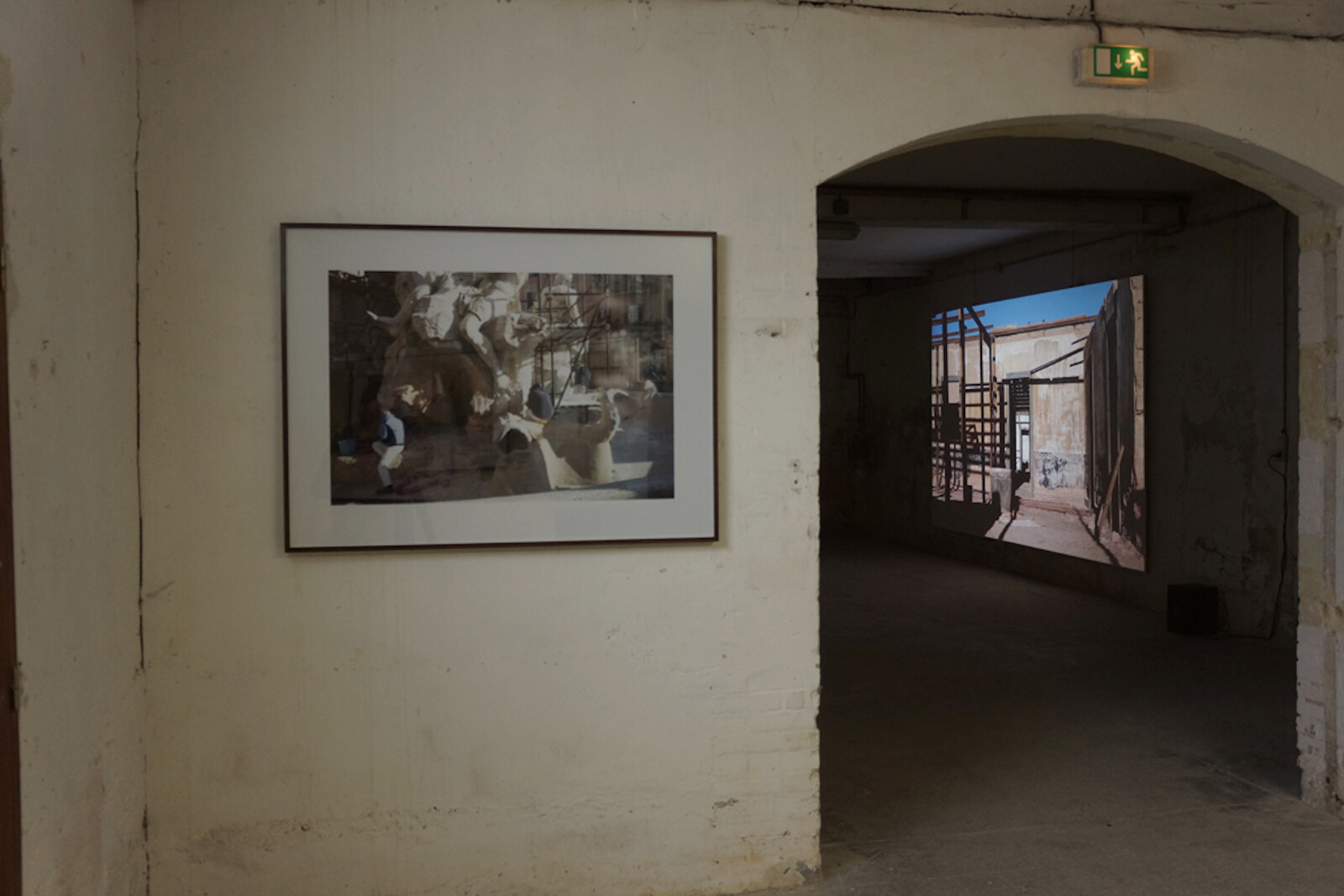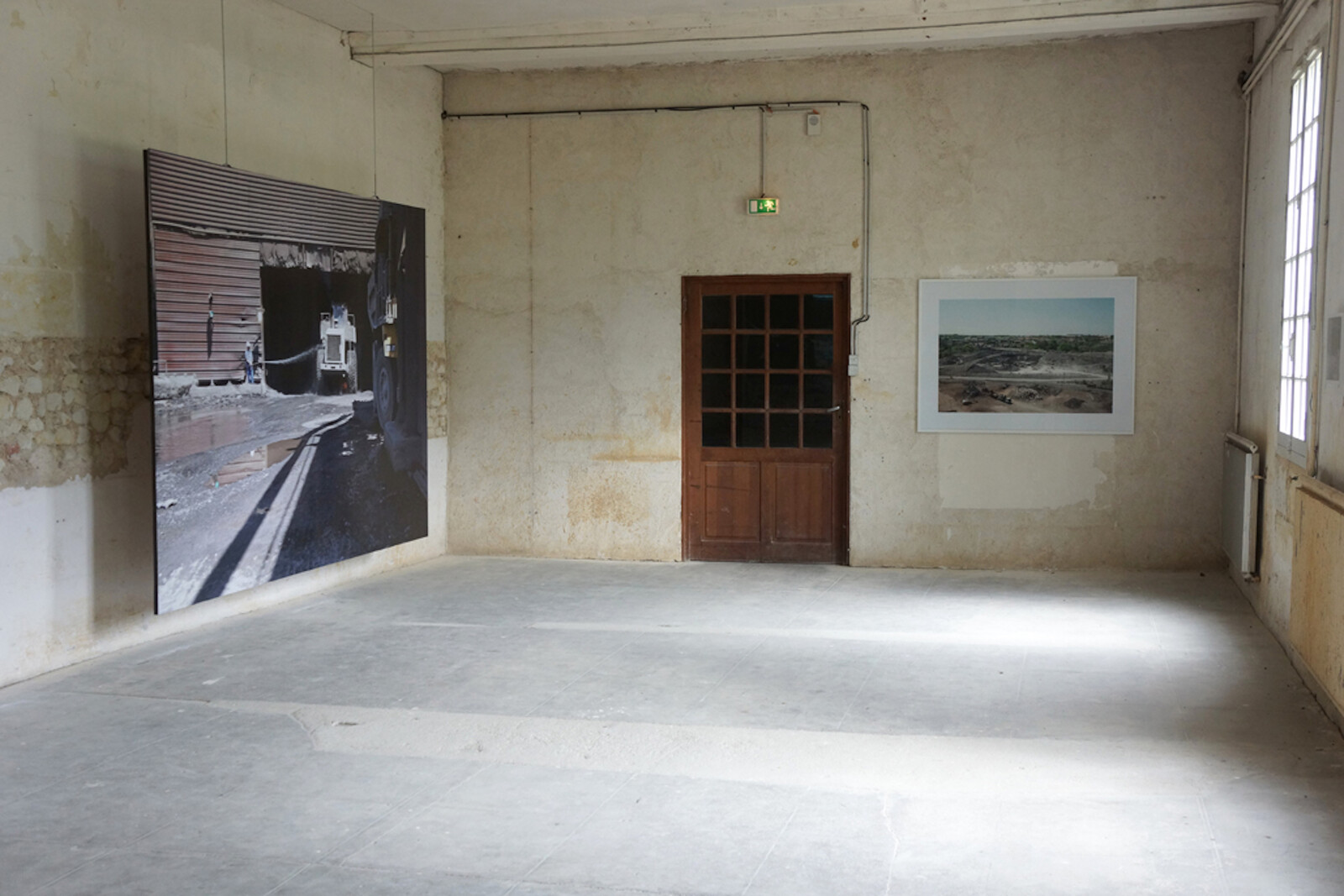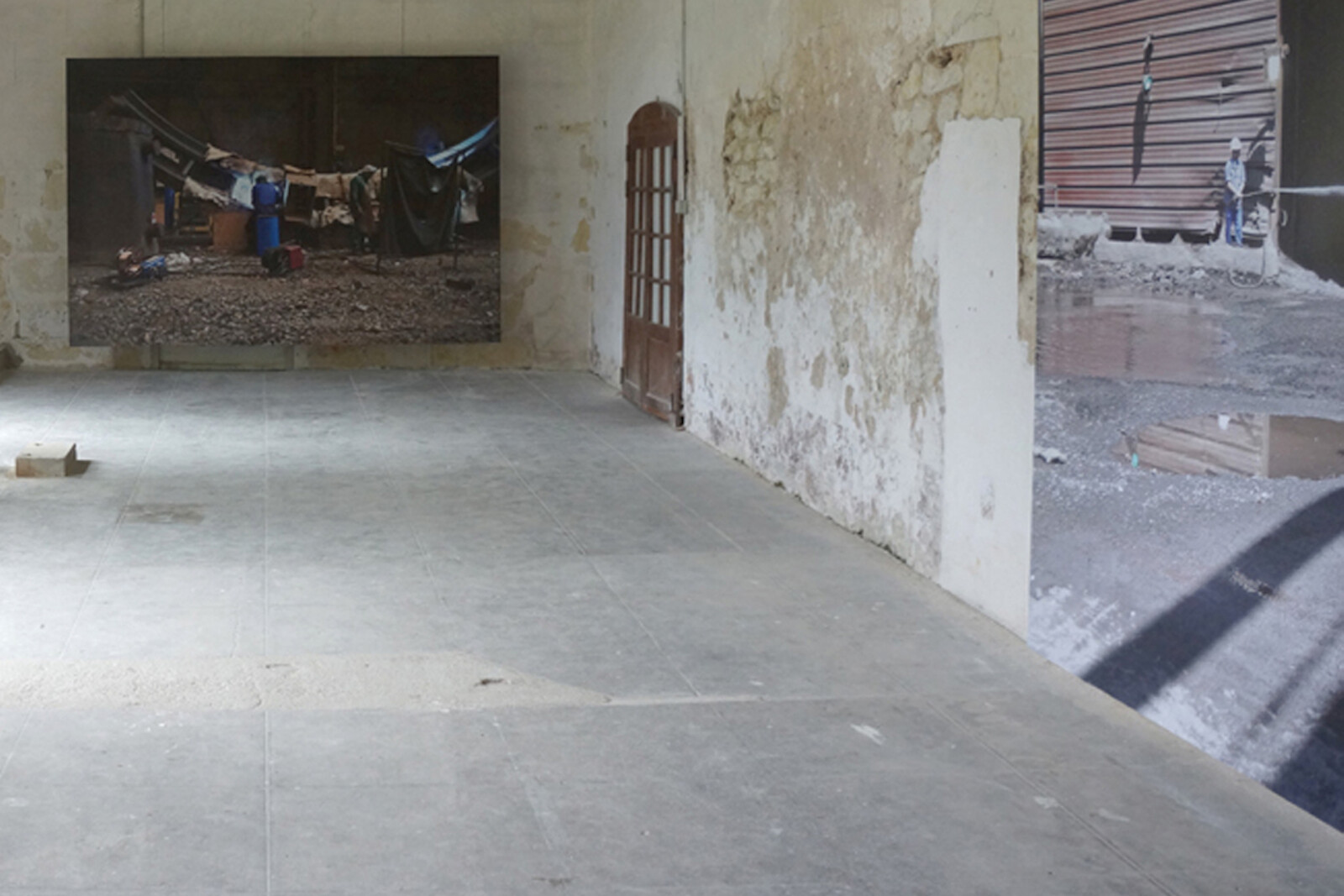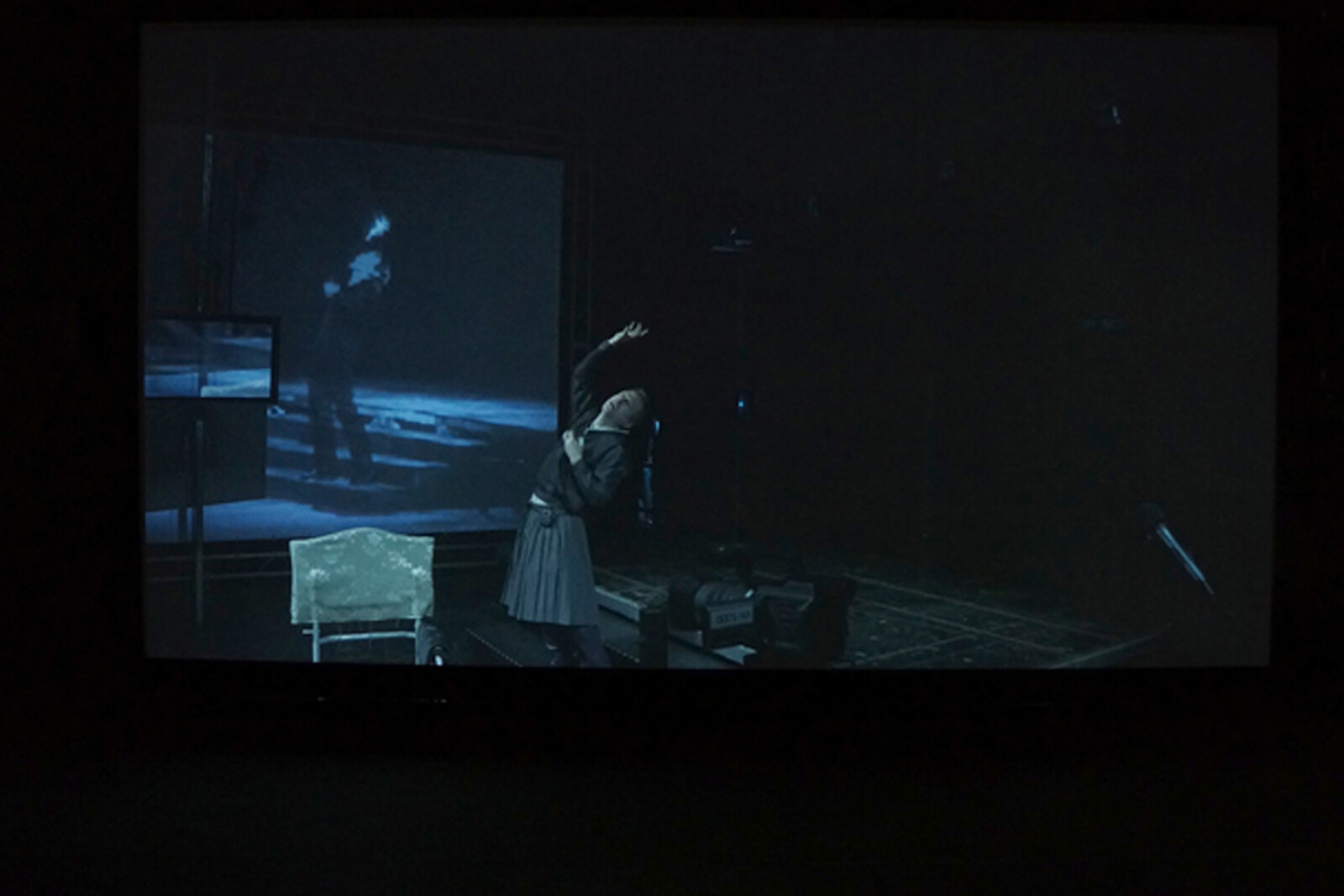June 1–November 22, 2020
In his 1964 essay “Rhetoric of the Image,” Roland Barthes made a key distinction between photography and film: while film produces an awareness of the “being-there” of a thing, photography generates a consciousness of its “having-been-there.” Photography is thus “the return of the dead,” a “flat death,” as Barthes wrote in Camera Lucida (1980), that cannot be brought back to life. Or, as Christian Metz wrote in 1985, expanding on Barthes’s distinction, film makes the dead appear alive, but photography, because of its stillness, “maintains the memory of the dead as being dead.”1 Some forty years on, this two-person exhibition offers a different perspective on the image: the encounter it stages between Turkish video artist Ali Kazma and French photographer Claire Chevrier challenges the association of film with life and photography with death, turning the conventional dichotomy on its head.
Spread across the labyrinthine spaces of Les Moulins de Paillard—an arts center in a former eighteenth-century paper mill, with a program ranging from Gordon Matta-Clark to contemporary music and dance—“Extracted Foreign Bodies” explores the liminal spaces between the two genres in a series of revealing confrontations. In the first room, Kazma’s single-channel video Safe, Resistance (2015) portrays the Global Seed Vault, a storage facility located in a remote part of Norway. Its unhurried camera shots, each filmed from a fixed point, dwell on the exterior and interior of the vault and the all-but-motionless snowbound landscape surrounding it. The absence of camera movement in Kazma’s videos means that his images are sometimes mistaken for photographs. Yet, as the artist points out, a video image of a stationary object is worlds apart from a still image of the same object: it is never completely fixed, but can move at any moment. It might therefore make sense to suggest that Safe, Resistance will always be more alive than a photograph. Yet the enlarged image projected on a screen hanging near it belies this claim. Likewise addressing the theme of preservation—that of a factory worker with a cognitive disability whose employer has allowed him to continue monitoring an obsolete machine—Claire Chevrier’s photograph PE 23 (2010) has been turned into a life-size, full-color, digital projected still image. Its sheer size, brightness, and sharpness give its protagonist a tangible presence, making the still image seem just as alive as the moving images opposite it.
The next rooms alternate between individual videos and groups of photographs, likewise organized according to theme, and with the photographs appearing more or less animated depending on whether they are projected, printed, or backlit. In Eye, Resistance (2013), Kazma films a surgical team performing cataract surgery; Chevrier’s photo lightbox Salle d’opération 02 (Operating Room 02, 2005) highlights what she calls a “choreography” of gazes—a reference to the intent expressions of a surgical team clustering around an operating table, their eyes peering out from between their white facemasks and blue surgical caps. Kazma’s “Resistance” series, three works from which are on show, maps the social and scientific processes used to mold the human body, as well as the spaces and institutions that serve but also shape its needs. Chevrier’s images investigate adjacent territories, revealing what glances, gestures, and posture have to say about the body’s relation to the workplace, but also the extent to which the body defines the workplace, or, on the contrary, allows the workplace to redefine it. Helped along by the lightbox’s brightness and clarity, which make it seem far more “alive” than an unlit photograph, Salle d’opération 02’s shifting play of glances and expressive bodily positions once again invalidates photography’s association with death.
If photographs can express life, so can moving images convey the idea of death. Take Kazma’s Mine (2017), consisting of contemplative shots of a desolate mining town in the Atacama Desert, whose otherwise motionless remains occasionally swing or shudder in the wind. The impression of death it provides is far stronger than that conveyed by Chevrier’s SOL 03 (2007), a photograph of a mine with living miners at work in it. This isn’t a video that makes the dead appear alive, but one which paradoxically recalls Metz’s definition of photography as something which “maintains the memory of the dead as being dead.” Yet like Safe, Resistance and Eye, Resistance, Mine unfolds over a length of time, suggesting that the difference between Kazma and Chevrier’s works may be best expressed in terms of time and space. Both artists deal with human activity: its patterns, rhythms, and traces, and the places where it unfolds—Kazma speaks of making a poetic map of the world as he witnesses it, and Chevrier’s photographs constitute a growing archive of human activity. Kazma’s videos nonetheless explore actions that unfold across time, while Chevrier’s images show an action occurring in a particular space: the difference between Eye, Resistance and Salle d’opération 02, for instance, can be likened to seeing the same thing from nearly the same point of view, but not quite. Eschewing the binary logic of life or death, their works underscore the complementarity of the still and moving image: each artist contributes to the unending project of mapping the world—with the means at hand.
Roland Barthes, “Rhetoric of the Image,” Image Music Text, ed. and trans. Stephen Heath (London: Fontana Press, 1977), 44–45. Roland Barthes, Camera Lucida, trans. Richard Howard (New York: Hill and Wang, 1981), 92. Christian Metz, “Photography and Fetish,” October, Autumn 1985, 84.
